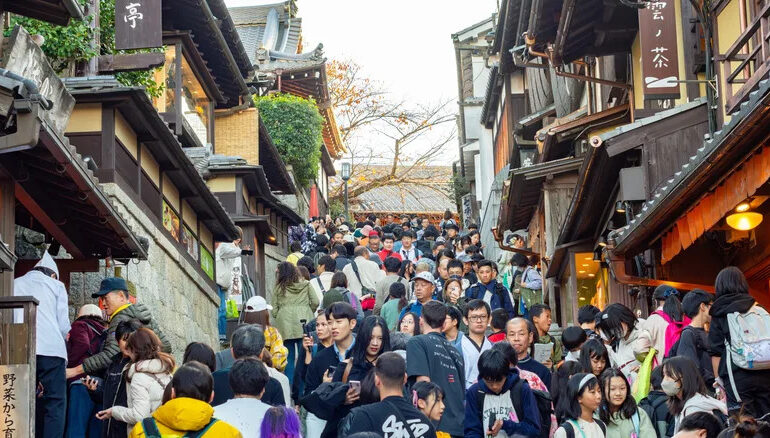Kyoto Introduces New Accommodation Tax to Tackle Overtourism

Kyoto, a city renowned for its rich history and stunning landscapes, will implement a new tiered accommodation tax starting in March 2026. This initiative aims to address the growing challenges of overtourism that have strained the city’s infrastructure and cultural heritage. With international visitor numbers surging to an unprecedented 10.88 million in 2024, the city is grappling with the dual impact of economic benefits and the pressures of increased tourism.
According to a tourism report released by the Kyoto city government in June 2025, the overall number of tourists reached 56.06 million, marking the second-highest figure since 2015. This influx has led to Kyoto being labeled one of the “most disappointing” tourist destinations globally due to overcrowding, as well as being included in a list of 13 beautiful locations affected by overtourism. The new accommodation tax is a critical part of the city’s strategy to balance tourism benefits with the need for preservation of its centuries-old landmarks and neighborhoods.
Details of the New Tax Structure
The tiered accommodation tax will vary based on the price of lodging. For example, travelers staying in rooms priced under ¥6,000 (approximately $40) will pay an additional nightly tax of about $1.30. Those in the ¥6,000 to ¥20,000 ($40 to $130) range will see the tax increase to roughly $2.60. For accommodations priced between ¥20,000 and ¥50,000 ($130 to $330), the tax will be approximately $6.50, while guests paying between ¥50,000 and ¥100,000 ($330 to $650) will owe around $26 per person, per night. Luxury accommodations costing over ¥100,000 ($665) will incur a tax of about $65 per person per night.
This tax, applied per person and not per room, will help fund improvements to public infrastructure, including enhanced public transport systems and crowd control measures at popular sites. The revenue generated is expected to more than double the current totals from the previous accommodation tax introduced in 2018. City officials argue that those who benefit from Kyoto’s attractions should contribute to the costs associated with managing the impacts of tourism.
Navigating Kyoto and Exploring Its Free Attractions
Reaching Kyoto as an international traveler requires at least one transfer, as the city does not have its own airport. The closest international airport, Kansai International Airport, is about 75 minutes away by express train. The Limited Express Haruka line connects directly to Kyoto Station, and frequent bus services also operate between the airport and the city.
Despite the rising costs associated with the new tax, Kyoto boasts numerous cultural and outdoor attractions that remain free to visitors. Notable sites include the Shimogamo Shrine, a UNESCO World Heritage site established in the sixth century, and the iconic Fushimi Inari Shrine, famous for its thousands of vivid red torii gates. Both sites offer free entry and are open 24 hours a day.
Other no-cost options include the Higashi Hongan-ji Temple, recognized as Kyoto’s largest wooden temple, and the expansive Kyoto Gyoen National Garden, which features the historic grounds of the Kyoto Imperial Palace. Visitors can also enjoy the scenic Philosopher’s Path, a cherry tree-lined route, and the tranquil Arashiyama Bamboo Forest, with fees only applicable for nearby attractions.
Travelers looking to manage their expenses may consider accommodations in nearby cities, such as Osaka, Kobe, or Nara, which are well-connected to Kyoto by public transport.
As Kyoto prepares for the introduction of the accommodation tax, the city is poised to continue welcoming visitors while striving to protect its cultural and historical sites for future generations.






